The design world is enriched by the diverse contributions of Black architects who have transformed urban and natural spaces through creativity, innovation, and a deep understanding of the cultural significance of place. From parks and memorials to public plazas and gardens, Black architects have designed outdoor spaces that not only inspire but also foster community connection, celebrate heritage, and promote sustainability. Here are five outstanding outdoor spaces designed by Black architects that exemplify excellence in architecture and urban design.
1. The Confluence Park (San Antonio, Texas)
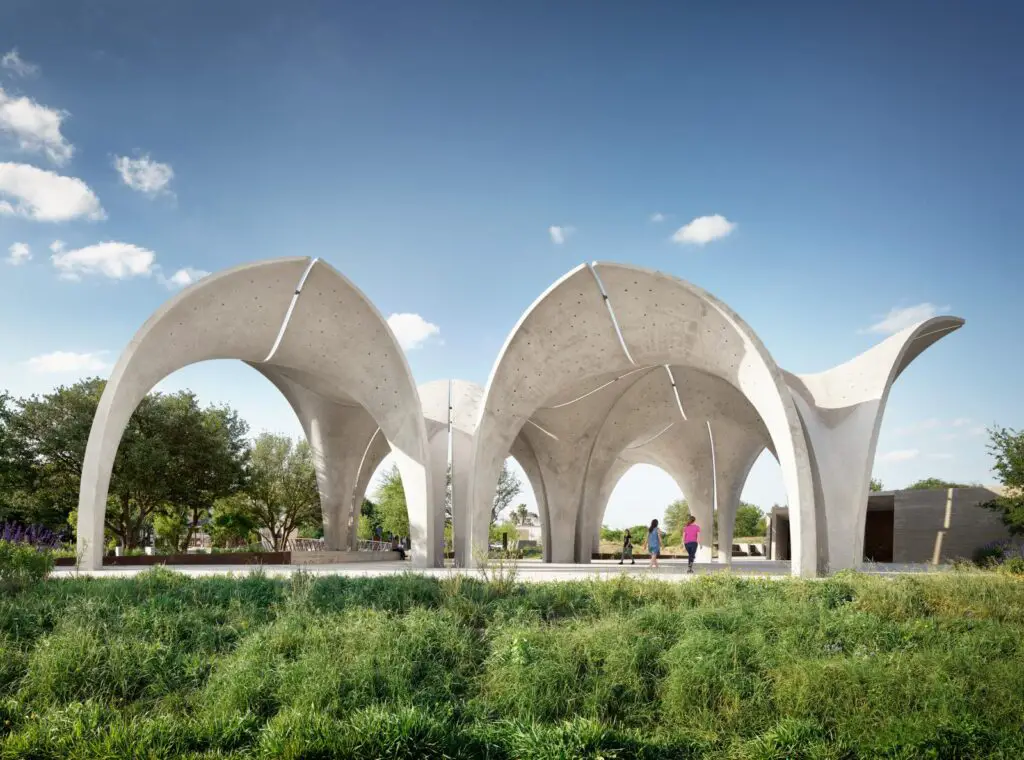
Confluence Park, designed by landscape architect and educator, Tosin Oshinowo, offers a beautiful example of how thoughtful outdoor spaces can promote environmental sustainability while fostering a sense of community. Situated along the San Antonio River, the park was conceived as a space that harmonizes with nature while also serving as an educational hub. The design integrates water management and sustainable practices, with rainwater harvesting systems and native plantings that help manage the park’s water flow and contribute to its ecological health.
The park’s layout encourages community engagement through its multi-use spaces, including a pavilion, amphitheater, and educational center. The open spaces are designed to host a range of activities, from family gatherings to environmental workshops. Oshinowo’s use of natural materials, like stone and wood, ensures that the park is not only functional but also aesthetically connected to its surroundings. Learn more about the park’s features and sustainable practices on the City of San Antonio’s official page.
2. The National Museum of African American History and Culture Grounds (Washington, D.C.)
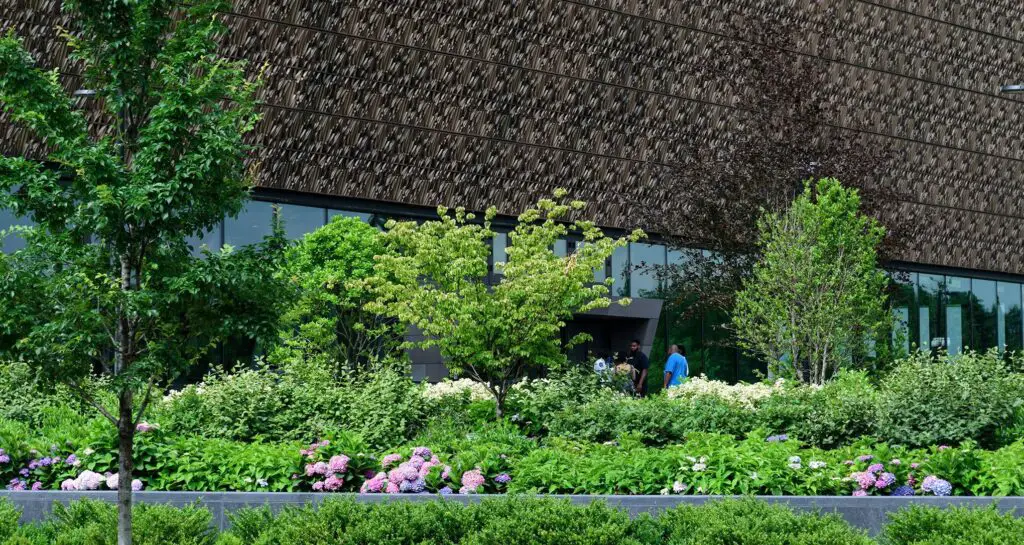
Designed by architect David Adjaye, the National Museum of African American History and Culture (NMAAHC) grounds are a celebration of Black history, culture, and identity. The museum’s surrounding landscape, with its integration of outdoor spaces, is as much a part of the experience as the exhibitions inside. The design of the grounds, which includes the garden and plaza, incorporates symbols of African heritage and connects the museum to the broader national narrative. Adjaye’s design respects the historical context of its location, with references to both African and African American traditions, creating an immersive environment that resonates with visitors.
The museum’s plaza is designed to be both a reflective and celebratory space, allowing visitors to engage with the rich cultural history it represents. The use of water features, trees, and open spaces provides a tranquil atmosphere amidst the bustling city. The layout and planting scheme, which emphasizes indigenous and culturally significant plants, ties the site to the natural environment and enhances the museum’s storytelling. The NMAAHC grounds are a key component of the museum’s educational mission, and you can explore more about the design on the Smithsonian Institution website.
3. The Paul Robeson Campus Center Plaza (Newark, New Jersey)
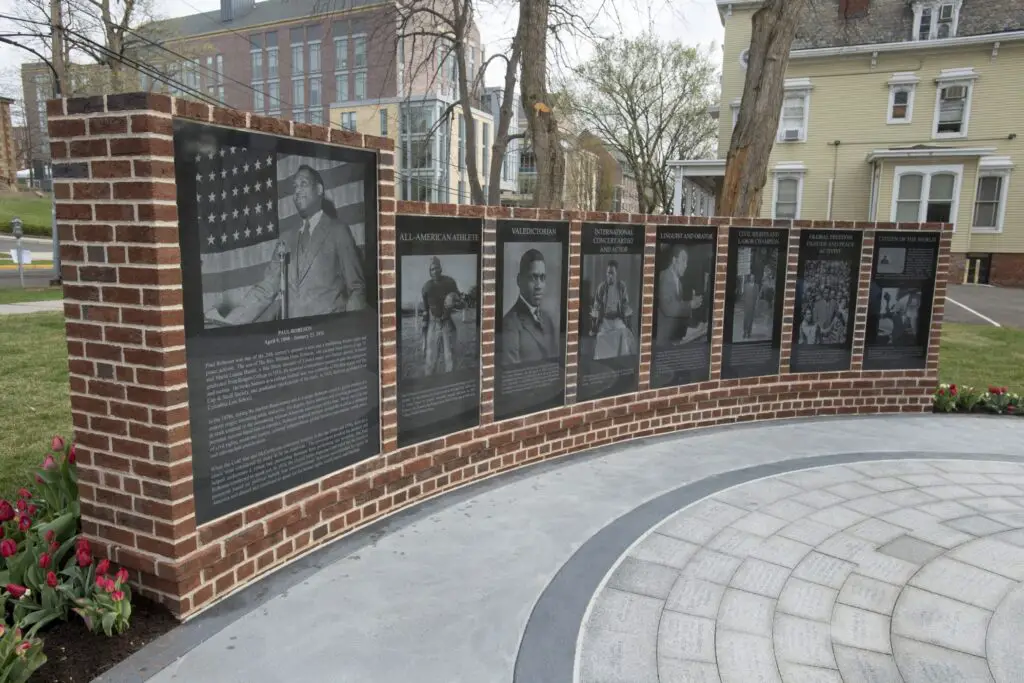
Designed by architect and urban planner, Maya Lin, the Paul Robeson Campus Center Plaza stands as a vibrant public space that honors the legacy of civil rights leader and cultural icon, Paul Robeson. Located at Rutgers University-Newark, the plaza blends urban design with artistic expression, offering students, faculty, and the local community a dynamic space to gather, reflect, and interact. Lin’s design of the plaza emphasizes the importance of public art in creating spaces that engage the community both intellectually and aesthetically.
The plaza features a central fountain, seating areas, and strategically placed sculptures that celebrate Robeson’s contributions to both social justice and the arts. Lin’s thoughtful integration of natural elements, such as trees and open green spaces, provides a peaceful retreat within the urban environment. The design also incorporates nods to the university’s history and the local community, ensuring that the plaza feels connected to its roots. For further details on the plaza and its features, visit the Rutgers University website.
4. The Schomburg Center for Research in Black Culture (Harlem, New York)
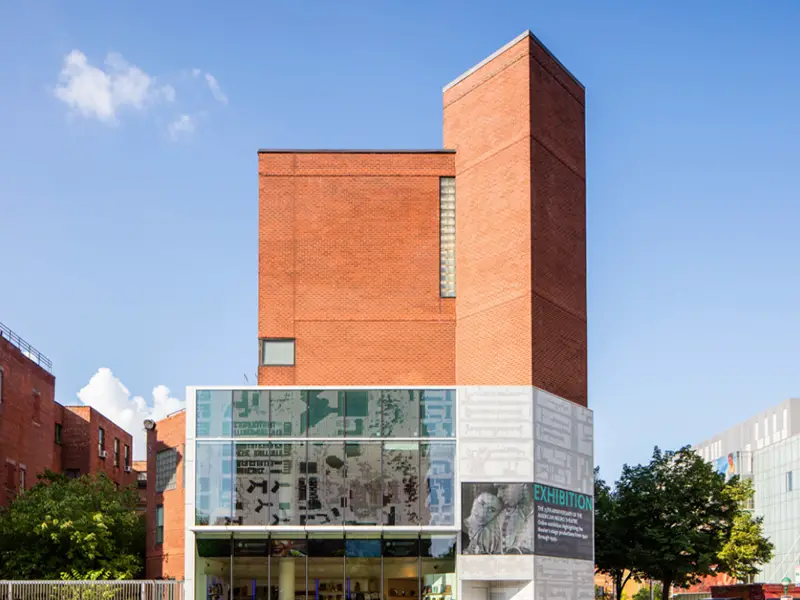
The Schomburg Center for Research in Black Culture, located in Harlem, New York, is one of the most important cultural institutions dedicated to preserving and celebrating the African American experience. Designed by architect J. Max Bond Jr., this renowned research library and museum serves as a space for scholarly study, public programs, and community engagement, making it a vital resource for both researchers and the local Harlem community. Bond’s design, which was completed in the 1980s, thoughtfully merges the historical significance of the Schomburg Center’s mission with the dynamic urban context of Harlem.
Bond’s architectural vision honors both the intellectual and cultural heritage of African Americans while creating a welcoming space for all visitors. The building’s exterior, which features a mix of modernist and classical elements, includes a prominent brick façade that ties the center to Harlem’s historic architecture. Inside, the design focuses on openness and accessibility, with expansive reading rooms, exhibition galleries, and spaces for public events. Bond incorporated natural light and open sightlines to ensure the building feels bright and inviting, reflecting the vibrancy of the African American culture it represents. The Schomburg Center stands as a powerful testament to J. Max Bond Jr.’s commitment to designing spaces that foster learning, empowerment, and community. To learn more about the Schomburg Center, visit the New York Public Library website.
5. The African Burial Ground National Monument (New York City, New York)
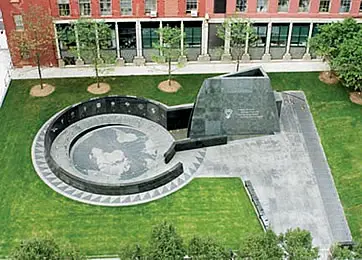
Located in Lower Manhattan, the African Burial Ground National Monument is a powerful testament to the resilience and history of African slaves in early America. Designed by architect Rodney Leon, the monument honors the site where over 400 African men, women, and children were buried during the 17th and 18th centuries. The outdoor memorial space includes a series of sculptural elements, including a prominent obelisk, that symbolize the strength and dignity of the enslaved people who were buried here.
Leon’s design also incorporates a visitor center, which offers educational exhibits that detail the history of the African Burial Ground and its significance to the African American community. The memorial’s layout, with its raised platform and thoughtful use of space, invites visitors to engage in reflection and understanding. The African Burial Ground is a sacred and educational site that stands as a reminder of the contributions and sacrifices of African Americans. Learn more about the monument on the National Park Service website.
